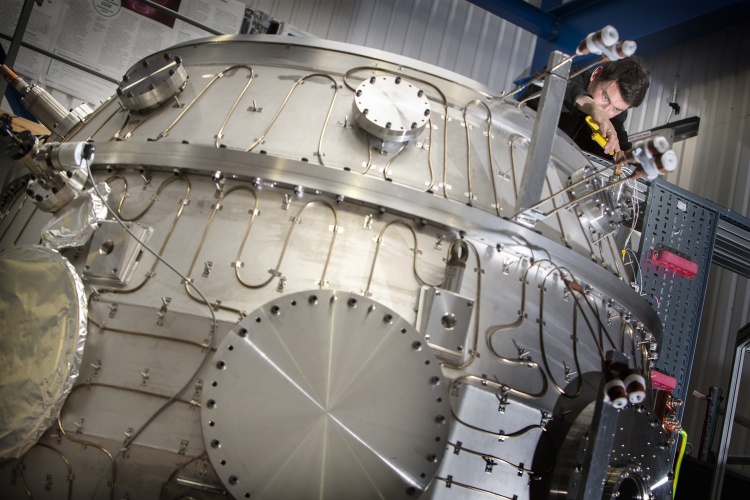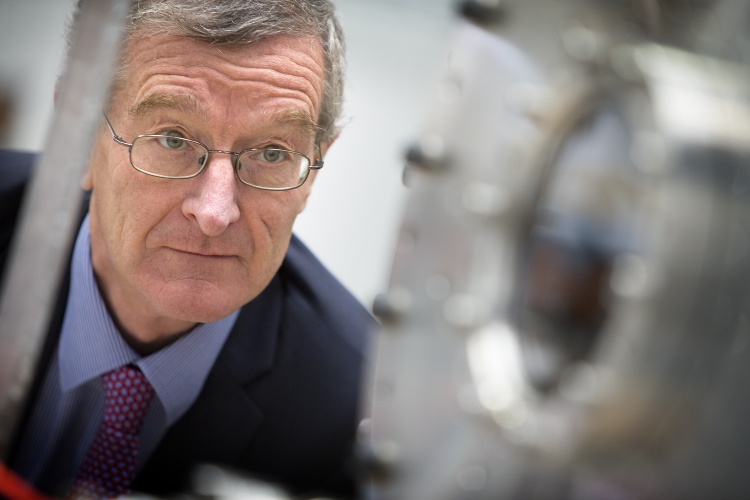
The ST40 (© Tokamak Energy)
Known as the ST40, the reactor represents the third of five stages in the company’s plan to deliver fusion energy to the grid by 2030. Controlled fusion requires temperatures in excess of 100 million (m)°C, but this has never been achieved by a privately funded company. To reach that goal, Tokamak Energy is focusing on compact, spherical tokamak reactors, as it believes they are quicker to develop and offer the quickest route to commercial fusion power.
“Today is an important day for fusion energy development in the UK, and the world,” said Dr David Kingham, CEO of Tokamak Energy. “We are unveiling the first world-class controlled fusion device to have been designed, built and operated by a private venture. The ST40 is a machine that will show fusion temperatures – 100 million degrees – are possible in compact, cost-effective reactors. This will allow fusion power to be achieved in years, not decades.”
The next steps in the ST40’s development will see the reactor’s magnetic coils commissioned and installed. These are crucial for containing the super-heated plasma and pushing towards fusion temperatures. By Autumn 2017, the company hopes to have produced a plasma temperature of 15m°C, with 100m°C reached at some point in 2018. Longer term, Tokamak Energy is aiming to deliver its first fusion electricity by 2025, with commercial power available via the grid five years later.
“We will still need significant investment, many academic and industrial collaborations, dedicated and creative engineers and scientists, and an excellent supply chain,” said Kingham.

Dr David Kingham (© Tokamak Energy)
“Our approach continues to be to break the journey down into a series of engineering challenges, raising additional investment on reaching each new milestone. We are already half-way to the goal of fusion energy; with hard work we will deliver fusion power at commercial scale by 2030.”





Glasgow trial explores AR cues for autonomous road safety
They've ploughed into a few vulnerable road users in the past. Making that less likely will make it spectacularly easy to stop the traffic for...